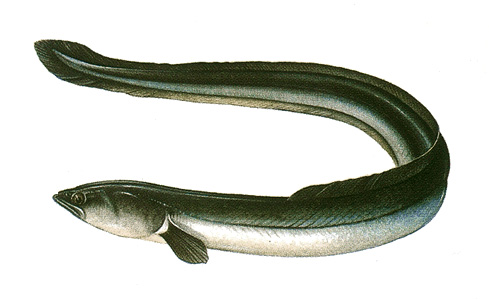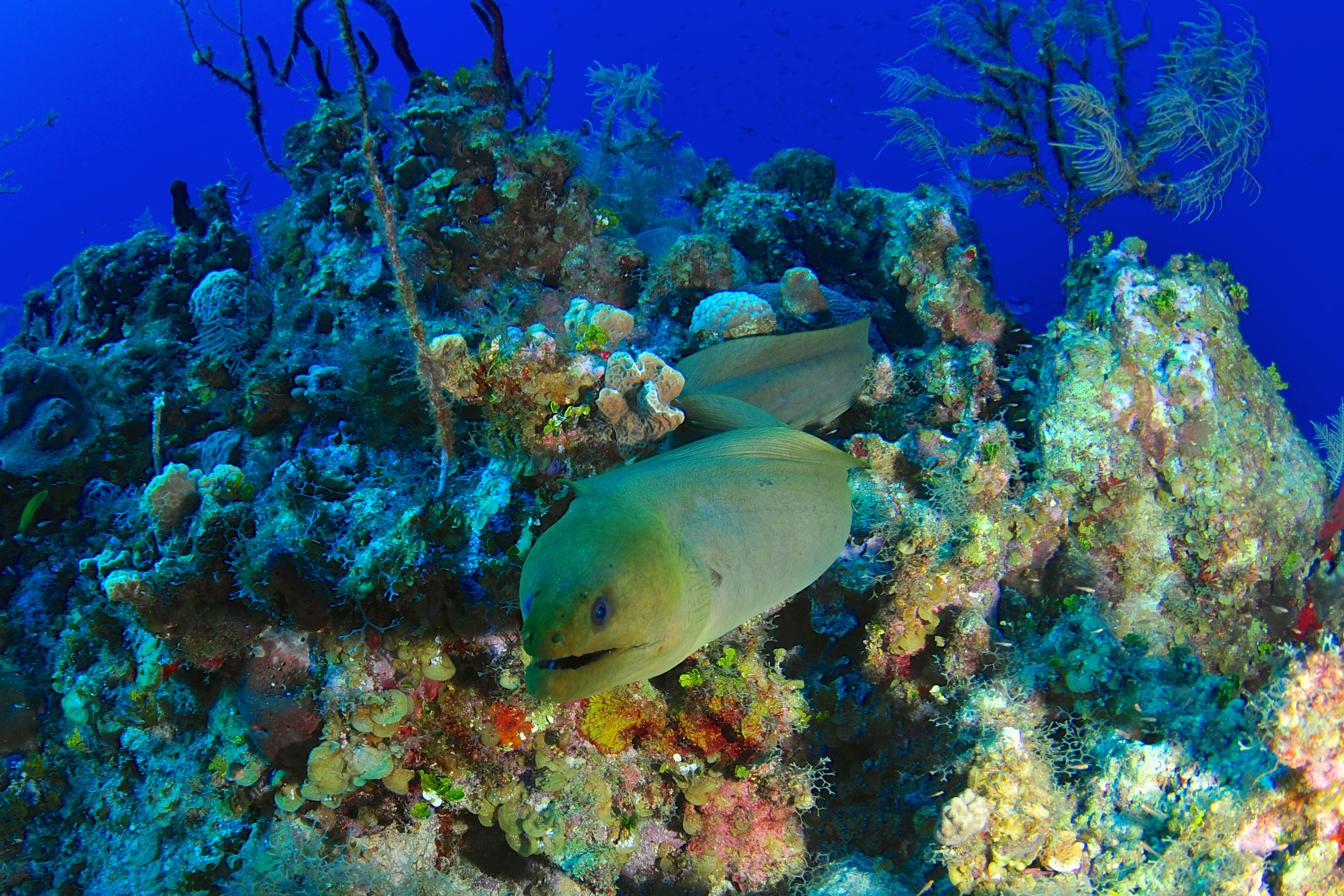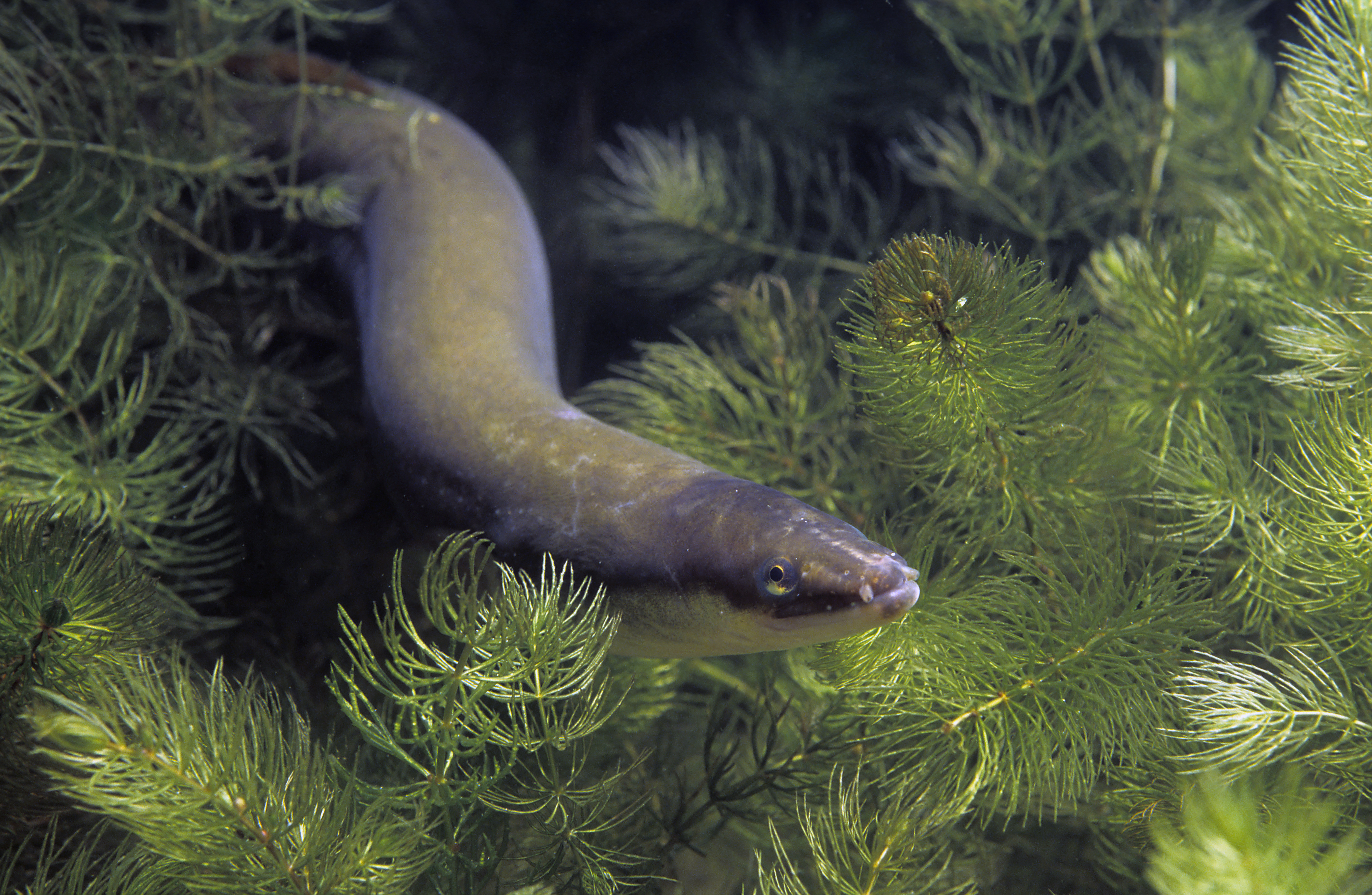Eel is the name for numerous long, slimy fish that look like snakes. There are hundreds of species (kinds) of eels. Most live in the ocean. Such saltwater eels include morays, congers, snake eels, and snipe eels. Scientists know little about these eels. The most studied eels belong to a group often referred to as freshwater eels. These eels can live in both salt water and fresh water. Other kinds of long, slender fish are called “eels,” including electric eels. But scientists do not consider such animals true eels. This article discusses freshwater eels.

Freshwater eels include the American eel and the European eel. American eels live along the Atlantic coast of North America. European eels are found along the Atlantic coast of Europe and in the Mediterranean Sea.
Life cycle.
American eels and European eels begin their lives in the Sargasso Sea, an area of the Atlantic Ocean northeast of the Caribbean Islands. The female eel lays her eggs there in the spring before she dies. Each egg hatches into a tiny, narrow larva, the next stage in a true eel’s development. The larva, known as a leptocephalus, resembles a transparent willow leaf. As ocean currents carry it northward, the leptocephalus undergoes a metamorphosis (change in body form) and develops into a transparent miniature eel, or glass eel.
By the time this miniature eel reaches the coast of North America or Europe, it has developed some coloration and is known as an elver. Scientists believe that male elvers stay in salt water along the coast. Most female elvers swim into rivers and other bodies of fresh water. Elvers are strong swimmers, and the female may climb waterfalls or dams to reach inland waters.
The elver gradually increases in size and turns a dull, yellowish-green. It is then called a yellow eel. During this stage, which usually lasts 7 to 10 years, the eel reaches its full size. Most females grow 3 to 4 feet (91 to 122 centimeters) long and most males about 11/2 feet (46 centimeters) in length. Eventually, the eel undergoes a second metamorphosis and becomes an adult. The skin color on its sides changes to silver, its eyes get larger, and it becomes sexually mature and able to breed. In its adult stage, the eel is called a silver eel.


Migration.
Each fall, large numbers of silver eels group together and begin to migrate back to the Sargasso Sea for breeding. Scientists do not know how the eels find their breeding places. They believe that eels use their sense of smell to find their way back, and that the animals rely on ocean currents for direction. Studies have shown that eels can detect weak electric currents generated by movements of water. These small electric currents may serve as navigational guideposts for the eels.

Eel fishing.
Many people enjoy eating freshwater eels, and fishing crews harvest great numbers of eels each year. The eels are caught in large nets or in specially built cages. Some freshwater eels have become endangered due to overfishing.

